Newsroom
Media Guide
- District Attorney Message
- What Is The District Attorney’s Office?
- Who Can The Media Call When They Have A Question?
- How Do I Find Case Information?
- What Information Can The DA’s Office Release To The Media?
- What Information Cannot Be Released To The Media?
- How Do I File for Media Access in the Courtroom?
- District Attorney Office Locations
- Steps In The Criminal Justice System
- District Attorney Divisions
- How Does The District Attorney’s Office Handle Officer Involved Shootings?
- Fast Facts About The DA’s Office
- Frequently Asked Questions
- Mission Statement And Values
District Attorney Message [TOP]
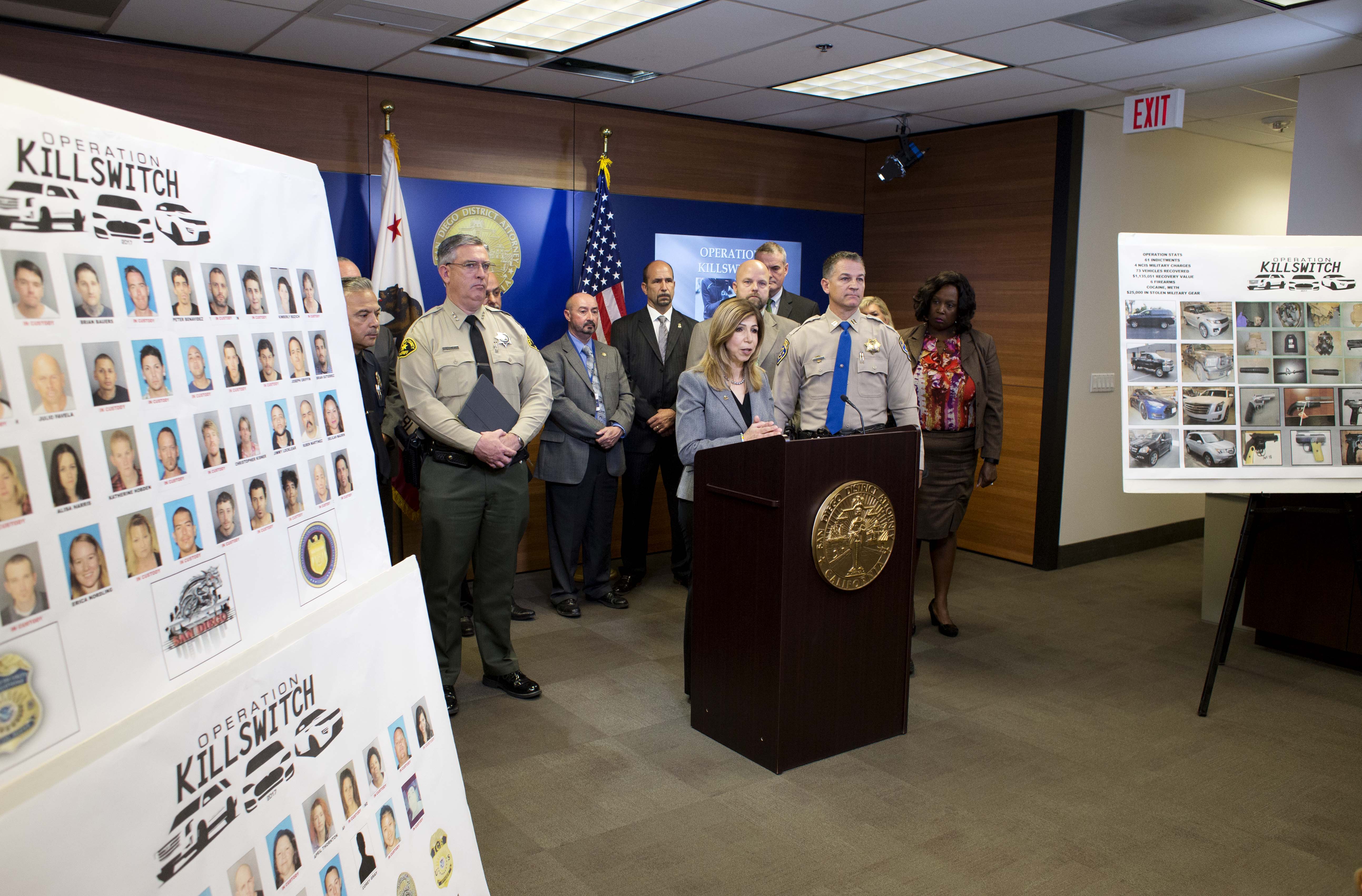 Welcome to the San Diego County District Attorney’s media guide. We value the role
the Fourth Estate plays in making the criminal justice system open and available to the public.
We are committed to maintaining transparency and excellent working relationships with the media.
At the same time, we are charged with protecting the integrity of the criminal
justice system, including the Constitutional rights of all citizens who go through
it. We hope this media guide is helpful to you. Please do not hesitate to contact us
with questions.
Welcome to the San Diego County District Attorney’s media guide. We value the role
the Fourth Estate plays in making the criminal justice system open and available to the public.
We are committed to maintaining transparency and excellent working relationships with the media.
At the same time, we are charged with protecting the integrity of the criminal
justice system, including the Constitutional rights of all citizens who go through
it. We hope this media guide is helpful to you. Please do not hesitate to contact us
with questions.
What Is The District Attorney's Office? [TOP]
The San Diego County District Attorney's Office prosecutes felony crimes
throughout San Diego County. The District Attorney's Office also prosecutes misdemeanor
crimes in unincorporated areas of the County as well as a few cities, including Poway. We
serve a population of approximately three million people in a jurisdiction that covers some
4,200 square miles.
District Attorney Summer Stephan oversees approximately 310 Deputy District Attorneys in the DA's office. Helping prosecutors prepare their cases are District Attorney Investigators (DAIs) who are sworn peace officers. In order to become a DAI, a police officer must have at least four years of detective experience. There are about 150 DAIs employed by the District Attorney’s Bureau of Investigation.
Who Can The Media Call When They Have A Question? [TOP]
Tanya Sierra
Public Affairs Officer
Assistant Communications Director
tanya.sierra@sdcda.org
619-531-3315
Emily Cox
Public Information Officer
San Diego County Superior Court
emily.cox@sdcourt.ca.gov
(619) 844-2353
Cesar Jimenez
Public Information Officer
San Diego Police Department
teaster@sandiegopd.gov
619-531-2675
David Collins
Media Relations Director
San Diego County Sheriff’s Department
david.collins@sdsheriff.gov
619-248-5904
Kelly Thornton
Public Information Officer
U.S. Attorney’s Office, Southern District
kelly.thornton@usdoj.gov
619-546-9726
How Do I Find Case Information? [TOP]
Information on criminal cases can be found through the District Attorney’s Office and the San Diego Superior Court.
The DA’s Office
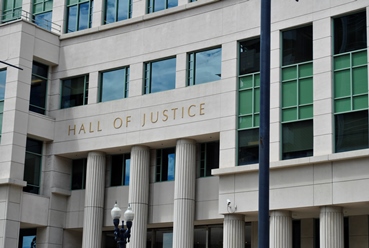
The DA’s public website (www.SanDiegoDA.com) has a link on its homepage for Case Information. Members of the media, or the public, can look up basic information about pending criminal cases using the defendant’s last name or the DA case number. The Case Information link will provide the defendant’s first and last name; their defense counsel (if known); the Superior Court case number; the date, location and time of the defendant’s next court appearance; and the purpose of the hearing.
You may also sign up to receive an email notification each time a new court hearing is scheduled for a specific defendant. This feature is especially useful for assignment editors and managers, or reporters who plan on following a prosecution through the system to its conclusion.
The San Diego Superior Court
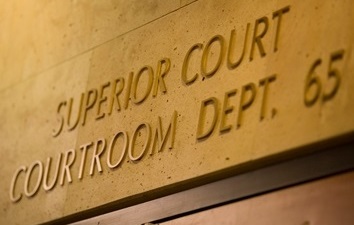
Court files are public records and subject to public inspection. California Rules of Court, rule 2.400(a) states that papers in the court files may be inspected by the public in the office of the clerk. Rule 2.550(a) says that unless confidential or sealed by law, court records are presumed open.
The District Attorney’s Office generally does not release copies of court filings such as criminal complaints. Reporters wishing to obtain copies of a court file should go to the Clerk’s Office in person and request the file. The Superior Court Clerk’s Office will not fax or send electronic copies of court files.
The public may view and obtain copies of the following case types:
- Criminal
- Civil
- Domestic (Divorce, Child Custody, Legal Separation, and Domestic Violence)
- Mental Health (Civil and Criminal)
- Minor Offense (Traffic and Infractions) Civil
- Probate
- Small Claims
In most cases you can locate a court file either via the court's online case search or by going to the court location where the case was tried.
Traffic, Minor Offense or Misdemeanor
If you are searching for records of vehicle code violations, some local municipal ordinances, infractions, or misdemeanors, you need to call or go to the court facility where the case was tried. These files are not available online.
Be aware, these records are stored at the court facility only for a short time before being housed at an offsite location. It could take several days to retrieve the records and there will be a fee charged for retrieving the record if it is in storage.
In most cases, infraction records are destroyed after three years, misdemeanor traffic records are destroyed after five years and misdemeanor DUIs are destroyed after 10 years.
Can't Find a Court Record?
If court staff is unable to find the court file, the file may have been destroyed or purged pursuant to Government Code Section 68152. The media may contact the San Diego Superior Court Public Information Officer, Emily Cox, with any questions at (619) 844-2353 or emily.cox@sdcourt.ca.gov
Juvenile Court Files
All Juvenile Court records are confidential. The minor, his or her parents or legal guardian(s), and attorneys of record may obtain copies of court minute orders and selected court documents by appearing at the appropriate reception counter with photo identification. The records will not be mailed. Pursuant to local rule, persons and agencies may inspect dependency records authorized by statute (Welfare and Institutions Code section 827) without obtaining a court order. The right to inspect such records includes the right to view them and obtain copies.
Other individuals must file a Petition For Disclosure of Juvenile Court Records (Form JV-570) . The completed form may be presented in person or by mail but must contain an original signature. If the petition is granted, viewing and/or obtaining copies may be done only by appearing in person with proper photo identification. Copies of records will not be mailed.
Forms requesting access and other information can be found in the Juvenile Court's Media Policy.
What Information Can The DA’s Office Release To The Media? [TOP]
 The District Attorney’s Office strives to provide what we can to the media at every step
in the criminal justice process. What we can discuss with the media varies, depending on
the status of a case.
The District Attorney’s Office strives to provide what we can to the media at every step
in the criminal justice process. What we can discuss with the media varies, depending on
the status of a case.
Once law enforcement has turned over its investigation to the DA’s office, we review the case. At this point, we cannot discuss that review, the facts of the case or any evidence. If we file charges in the case, we can provide information regarding charges, the maximum time in custody if the defendant is convicted of all the charges, basic information about the defendant like date of birth, and the arraignment date. However, because it is a pending criminal case, we generally cannot discuss any of the facts or evidence. Immediately following arraignment, more information can be provided, depending on what is put on the record in open court, including the following:
According to the State Bar of California Rule of Professional Conduct, the following information may be provided to reporters at arraignment:
- A description of the accused, including name, age, occupation, citizenship and whether the suspect is single, married or divorced;
- General description of the crime, but only facts put on the record in court;
- Circumstances immediately surrounding the arrest, including the time and place of arrest, pursuit and/or use of weapons, the identity of the arresting officer or agency and length of investigation;
- General description of the victim (except for sexual assault, domestic violence, stalking victim or at-risk persons) including age and occupation, (but not names, addresses or phone numbers);
- Description of principle charges and allegations or enhancements in the charging document;
- Information contained in the public record, including the complaint, and any information made part of the public record at arraignment, bail review, preliminary hearing or trial;
- Penalty range for the charged offenses or the sentence imposed;
- Amount bail, location of jail;
- Future court dates and explanation of the court process;
- Description of any motions filed if they are in the public record;
- A call for public assistance in providing information to aid in an investigation;
- A warning of danger regarding an at-large suspect.
What Information Cannot Be Released To The Media? [TOP]
The State Bar goes on to limit what information can be provided to the public:
Regardless of whether information is contained in the public record, prosecutors should avoid
making any public statement that has a “substantial likelihood of materially prejudicing an
adjudicative proceeding in the matter.” The American Bar Association provides specific examples
of information more likely than not to risk material prejudice:
- The name of an accused juvenile, unless the minor is deemed a 602 ward and charged with a serious or violent felony under Welfare and Institutions Code section 676;
- The subject of any gag order;
- A confession or admission of a suspect or defendant;
- A statement regarding the suspect or defendant’s refusal to make a statement;
- The prior criminal history of the suspect or defendant unless it is part of the criminal pleading or crime under investigation;
- Identity, testimony, or comment on the credibility of any prospective witnesses;
- Statements that violate existing gag orders or statutory rules of confidentiality;
- Possibility of a guilty plea to the offense charges or a lesser offense;
- The prosecutor’s personal belief in the guilt of the suspect or defendant;
- The identity of a sexual assault victim, domestic violence victim, stalking victim, confidential informant, or any at-risk person involved in the criminal matter;
- The results of examinations or the defendant’s refusal to submit to certain examinations (e.g., lineup, polygraph, blood-alcohol, DNA, or voice sample);
- The events of a closed courtroom session or secret Grand Jury Proceeding;
- The contents of a probation report if it has not been entered into the public record.
How Do I File for Media Access in the Courtroom? [TOP]
Cameras in the Courtroom
California law allows accredited news organizations to videotape/photograph court proceedings in the Superior Court if permitted by the judicial officer handling the case (to see Media and the Juvenile Court, click here ). Each judge or commissioner has discretion whether to allow a camera in his or her courtroom.
Filing a Camera in the Courtroom Request - Forms and Process
- Complete the Camera in the Courtroom forms
- Present completed forms to the courtroom where the proceeding will be held. (See Department Assignments, click here.)
- Out-of-town media may call the Court’s Public Affairs Office first at (619) 844-2353.
District Attorney Office Locations [TOP]
San Diego
Hall of Justice
330 W. Broadway
(Floors 7 through 13)
San Diego, CA 92101
(619) 531-4200
North County Branch
Vista Courthouse
325 S. Melrose Dr., Ste. 5000
Vista, CA 92083
(760) 806-4004
East County Branch
El Cajon Courthouse
250 Main St., 5th Floor
El Cajon, CA 92020
(619) 441-4588
South Bay Branch
333 H St., Ste. 4000
Chula Vista, CA 91910
(619) 498-5650
Juvenile Division
Juvenile Courthouse
2851 Meadowlark Dr.
San Diego, CA 92123
(858) 694-4250
Steps In The Criminal Justice System [TOP]
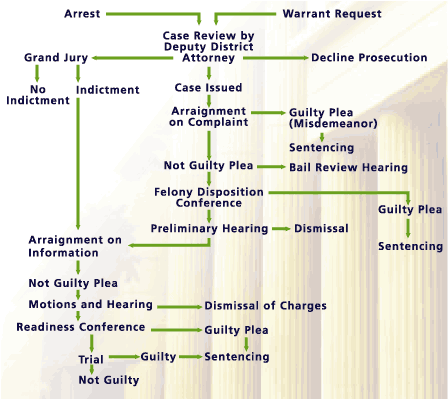
Arrest:
When a crime is committed, law enforcement gets the first call. In San Diego County, it is generally
the responsibility of local police or the Sheriff’s Department to investigate crimes and arrest suspects.
In many instances, suspects are immediately taken into custody and jailed. However, if the crime is not violent and the charge is minor, an individual may be directed in writing to appear in court on a specific date.
In California there are three major classes of offenses for which a person may be prosecuted: infractions, misdemeanors and felonies. Some are defined in the California Penal Code, and others can be found in local ordinances or statutes such as the Vehicle Code. An infraction is the least serious offense and often results in a fine. Many traffic violations, including speeding, are infractions.
A misdemeanor is a more significant crime that can result in jail time. Examples of misdemeanors are first offenses for shoplifting or driving under the influence of alcohol. A felony is the most serious crime and carries a penalty of more than one year of imprisonment. Examples of felonies are robbery, burglary, sale of narcotics and murder.
The District Attorney’s Office
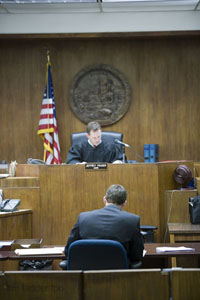 The District Attorney’s office represents the People of the State of California. Prosecutors bring criminal charges
against suspects in courts of law. The San Diego County District Attorney's Office has the responsibility and authority
to investigate and prosecute all felonies in San Diego County. We also prosecute all misdemeanors in the county, except
those committed in the City of San Diego. Under a long standing agreement, San Diego City employs its own attorneys
who prosecute all misdemeanors in the city.
The District Attorney’s office represents the People of the State of California. Prosecutors bring criminal charges
against suspects in courts of law. The San Diego County District Attorney's Office has the responsibility and authority
to investigate and prosecute all felonies in San Diego County. We also prosecute all misdemeanors in the county, except
those committed in the City of San Diego. Under a long standing agreement, San Diego City employs its own attorneys
who prosecute all misdemeanors in the city.
Before issuing a case, a DDA will review the facts with police investigators and sometimes meet with the victim of the crime. The DDA evaluates whether there is enough evidence to support the charges originally brought by police. If the evidence is convincing, the prosecutor will determine the final charges and compile an official list known as the complaint.
In some cases, the DDA may decide not to proceed with a case against a defendant. A prosecutor may decline to prosecute or “reject” a case if there is insufficient evidence or if more investigation is required. If a case is rejected, it is because prosecutors do not believe they could prove charges beyond a reasonable doubt - their legal and ethical standard.
The Courts:
Criminal cases are prosecuted in several different geographic areas of San Diego County: Vista, El Cajon, South Bay,
and Downtown. Juvenile crimes are handled at the court complex assigned for Juvenile and Dependency matters. Infractions
that occur in the City of San Diego are generally heard by Commissioners at a separate city facility.
With a few exceptions (economic fraud cases and child abuse cases), criminal complaints are generally filed in the courthouse closest to where the crime occurred.
Arraignment:
Once a prosecutor issues a case and files a complaint, the case is placed on the court’s calendar, and the defendant
is brought before a judge for arraignment.
In San Diego County, criminal defendants who are in custody are arraigned
within seventy-two hours of their arrest
if they are not able to post bail. If the defendant cannot afford an attorney,
one is appointed. During an arraignment, the defendant is informed of the charges in the complaint and enters a plea.
The judge sets the amount of bail, if any, and selects dates for three hearings: Bail Review, Disposition Conference and
Preliminary Examination. The Preliminary Examination (or Hearing) must take place within a certain amount of time unless
the defendant agrees to “waive time,” in which case the hearing is set for a date convenient to all parties.
NOTE: An Information is generated at the conclusion of a Preliminary Examination or at the time of an indictment by a Grand Jury. An Information is similar in appearance and content to the Complaint, and it requires a second arraignment. The Defendant typically waives reading of the Information and enters a plea of not guilty. At this second arraignment the Court will set future dates including Motions, Readiness and Trial.
About Bail:
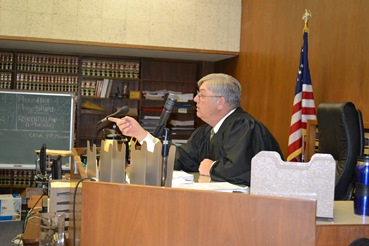 Bail is set at the time of the arrest and is often required to ensure the defendant returns to court at a future date.
The amount of bail is dictated by a written schedule that reflects the seriousness of the crime. At the arraignment,
the prosecutor will request bail in a particular amount, and the defense attorney will usually argue for a reduction.
Sometimes, the Deputy DA may ask the judge to attach conditions to a defendant’s release such as having no contact with the
victim or restrictions on travel. The judge has the final word.
Bail is set at the time of the arrest and is often required to ensure the defendant returns to court at a future date.
The amount of bail is dictated by a written schedule that reflects the seriousness of the crime. At the arraignment,
the prosecutor will request bail in a particular amount, and the defense attorney will usually argue for a reduction.
Sometimes, the Deputy DA may ask the judge to attach conditions to a defendant’s release such as having no contact with the
victim or restrictions on travel. The judge has the final word.
If the defendant posts the amount of money required to make bail, he or she will be released. This is often accomplished by collateralizing a loan or paying a premium to a bail-bonding agency. Some defendants are released without bail on their “own recognizance.” This happens when the judge is confident they can be counted on to appear in court for all proceedings. If bail is set, a defense attorney may request a bail review hearing at a future date to reconsider the amount of bail. The issue of bail may be raised at subsequent hearings.
Felony Disposition Conference / Readiness Conference:
Typically there are two formal opportunities for the prosecution and defense to negotiate a disposition (plea bargain)
on a case. The first occurs before the preliminary hearing; the second occurs after the preliminary hearing and before
trial. In both instances a judge will sit “in conference” with the DDA and the defense attorney and must approve any
negotiated settlement. Many cases are resolved in plea bargains at either stage of the proceedings.
Guilty Pleas:
Guilty pleas occur when the defendant either admits all of the charges or enters into a plea bargain in which the
prosecution and the defendant have mutually agreed upon the charges. Plea bargains will include either a stipulated
sentence or a sentencing recommendation. A judge must approve all negotiated pleas.
Motions and Hearings:
Sometimes legal issues must be resolved before a plea bargain or trial may take place. Most motions are considered in a
special Superior Court Department on a date set when the defendant appears for arraignment on the Information.
Trial:
A criminal trial is a search for the truth. It proceeds through the examination of evidence (which includes the
statements of witnesses) in a courtroom before a judge or a jury to determine whether a defendant is guilty of
the charges in the Information beyond a reasonable doubt.
Jury Selection:
Voir Dire is the name given to jury selection. Twelve jurors and several alternates are chosen to hear a
criminal case. When prospective jurors are summoned to the courtroom, the judge will explain certain principles
of law and question the prospective jurors. The Deputy DA and the defense attorney will also ask questions and “explore for bias.”
After questioning, each side may exercise a limited number of “peremptory challenges” to excuse jurors they don’t want.
The process continues until the 12 jurors and two or more alternates are chosen and sworn.
The Parts of a Trial:
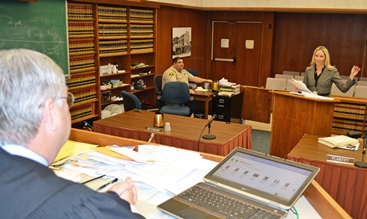 Opening Statement: At the beginning of the trial, the Deputy DA makes an Opening Statement that outlines the
prosecution’s case against the defendant. A defense attorney may elect to make an Opening Statement as well, but
it is not required. No argument is permitted.
Opening Statement: At the beginning of the trial, the Deputy DA makes an Opening Statement that outlines the
prosecution’s case against the defendant. A defense attorney may elect to make an Opening Statement as well, but
it is not required. No argument is permitted.
Case In Chief: The case brought by the District Attorney's Office generally involves calling witnesses and introducing other evidence. The Deputy DA questions each witness. Afterwards, the defense attorney may question or cross-examine the witness. The Deputy DA can follow up with more questions on redirect. This process continues until all of the prosecution's witnesses in the case have testified. At the end of the prosecution’s case, the defendant may ask the judge to dismiss the charges - a request that on the theory that the trial evidence is insufficient to establish the crime(s) charged.
Defense Case: The defendant is not required to testify, to present any witnesses, or to present any evidence. If defense witnesses are called, the Deputy DA may cross-examine each witness.
Rebuttal: The District Attorney's Office may present witnesses or evidence to rebut information presented by the defense.
Concluding Argument: The Deputy DA delivers a summation, at which time the evidence is reviewed and arguments supporting a guilty verdict are offered. The defense presents its closing argument after the prosecution. The Deputy DA is allowed time for rebuttal after the defense’s arguments. At the conclusion of closing arguments the judge gives final instructions on the law and explains the elements of each crime charged.
Deliberation: The jury may find the defendant guilty, not guilty, or may be unable to agree on a verdict (hung). If the jury cannot come to a verdict, with the court’s approval, the case may be tried again.
* DISCLAIMER:
The information provided above is meant to offer a general overview of the California state legal system and
should not be relied upon as legal advice.
District Attorney Divisions [TOP]
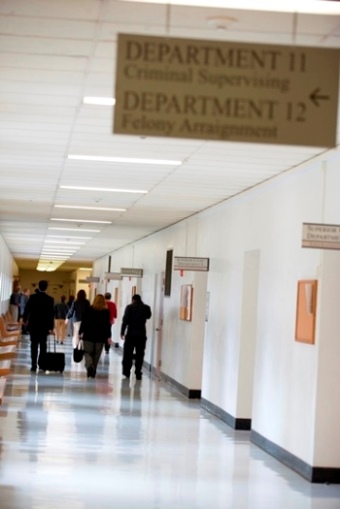 Bureau of Investigation: The primary function of the Bureau of Investigation is to provide the DA's office
its law enforcement component by taking part in developing a criminal case to the point of proof beyond a reasonable doubt
to ensure convictions in court.
Bureau of Investigation: The primary function of the Bureau of Investigation is to provide the DA's office
its law enforcement component by taking part in developing a criminal case to the point of proof beyond a reasonable doubt
to ensure convictions in court.
Appellate Division: The Appellate Division handles appeals on convictions and strives to serve the office in protecting criminal convictions as well as shaping the law through sound legal advice, high quality motions, writs and appeals, and cogent legislative efforts.
Case Issuance and Extradition Division: The Case Issuing and Extraditions Division is primarily involved in reviewing felony cases for filing. The attorneys review approximately 650 cases per month, in addition to their other duties. The Extraditions attorneys are responsible for handling the legal proceedings required for bringing a fugitive back into this jurisdiction. Those lawyers also assist other states and countries that wish to extradite fugitives arrested in San Diego County.
Cold Case Homicide Division: The District Attorney’s Cold Case Homicide Unit was formed in 2003 with the expressed purpose of solving and successfully prosecuting inactive homicide cases in San Diego County. Cold Case Homicide is staffed with highly experienced Deputy District Attorneys and District Attorney Investigators. They work with the various law enforcement agencies throughout San Diego County in a concentrated effort to seek justice for the many victims of homicide and their families.
Economic Crimes Division: The mission of the Economic Crimes Division is to prevent and prosecute financial crimes and to enforce the law in partnership with law enforcement and the community. Cases against public officials, large corporations and high tech criminal rings are large, complex matters, which require a team effort of lawyers, paralegals, investigators and clerical support. The teams within the division include Consumer Protection , Complex Theft, SD-RID: Regional ID Theft Enforcement Team, Environmental Protection, Public Assistance and Real Estate Fraud.
Family Protection Division: The Family Protection Division of the San Diego County District Attorney's Office ethically and aggressively promotes public safety by prosecuting crimes of murder, domestic violence, crimes against children, and elder abuse. The Family Protection Division strongly supports victims of crime, and works closely with criminal justice agencies and community partners.
Gangs Division: The goal of the Gang Prosecution Division is to reduce the level of gang violence in San Diego County. This goal is achieved by targeting violent gang crime such as murder, attempted murder, assault with weapons, drive-by shootings, rape and robbery. The Gang Division will also work with outside agencies to proactively target known gang members to prosecute them for lesser violations in order to prevent more violent crimes from happening.
Information Technology Division: Three sections make up the Information Technology Division. The Network Team, which includes desktop support, LAN operations, and the Help Desk, are responsible for acquiring, installing, and supporting information systems hardware and software. The Applications Development Team creates timely and effective business solutions for the DA in the form of software applications. The Web Development Team provides a multitude of visual communications and information to the public via the Internet, as well as daily communications and tools via the internal DA's intranet.
Insurance Fraud Division: The San Diego County District Attorney’s Insurance Fraud Division is comprised of a team of specialists who handle complex insurance fraud prosecutions from inception to sentencing, with the assistance of several task forces.
Juvenile Division: The Juvenile Division of the District Attorney's Office prosecutes all juvenile felonies and misdemeanors for the County of San Diego, including City of San Diego cases. From traffic matters to homicides, rapes and vehicular manslaughters, Juvenile Deputy DAs review, issue and prosecute all of these cases.
 Narcotics Division: The Narcotics Division was launched in 2003. Its responsibilities have included running the
treatment side of the drug cases in Drug Court and Proposition 36, the Substance Abuse Initiative, and Federal and State Asset
Forfeiture matters, to assisting law enforcement with large buy/walk projects in specific high crime areas.
Narcotics Division: The Narcotics Division was launched in 2003. Its responsibilities have included running the
treatment side of the drug cases in Drug Court and Proposition 36, the Substance Abuse Initiative, and Federal and State Asset
Forfeiture matters, to assisting law enforcement with large buy/walk projects in specific high crime areas.
Victim Services Division: The primary focus of this division is alleviating the plight of victims, especially as they encounter the criminal justice system. For many years now the District Attorney's Office in San Diego has aided victims directly through the Victim Assistance Program funded in part by the California Office of Criminal Justice Planning (OCJP). This program features District Attorney's Office paralegal victim advocates serving throughout the office to provide victims support and assistance at every stage of the investigation, trial, appellate and incarceration processes.
Sex Crimes and Human Trafficking Division: The Sex Crimes and Human Trafficking Unit was created in 2003. This specialized division deals with some of the most violent and sensitive crimes in San Diego. It has made a significant impact on the way sex crimes and human trafficking are issued and prosecuted. All of the Deputy DAs assigned to this division receive special training to better understand the complex nature of working with these vulnerable victims.
Special Operations Division: This division investigates and prosecutes cases involving public officials and law enforcement. It also handles internal affairs, election law violations, hate crimes and major vice. This division acts as the primary advisor to the San Diego Grand Jury and reviews all police use of deadly force. To make sure the office maintains good working relationships with Mexico and with the Indian tribes in the area, this division has International Liaisons and a Tribal and Gaming Liaison.
Superior Court Division: The court has handled some of the most serious, challenging and tragic cases in the history of the county, include kidnappings, assaults, robberies and murders. The Superior Court team works tirelessly to hold accountable the predators that victimize the citizens of San Diego County while exercising the highest in ethical standards. The court is committed to helping victims of crime recover from losses at the hands of criminals.
How Does The District Attorney's Office Handle Officer Involved Shootings? [TOP]
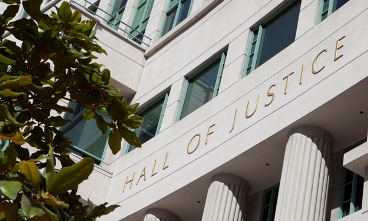 The Office of the District Attorney has conducted reviews of all officer involved shootings (OIS) in the line of duty by
San Diego County peace officers since the mid- 1970's. In 2006, a revised Protocol for Investigation and Review of Officer
Involved Shootings and Other Uses of Force Resulting in Death was signed by the District Attorney’s Office, Sheriff,
the Warden at Donovan State Prison and the Chiefs of all the local law enforcement agencies in San Diego County, including
the Border Division of the CHP.
The Office of the District Attorney has conducted reviews of all officer involved shootings (OIS) in the line of duty by
San Diego County peace officers since the mid- 1970's. In 2006, a revised Protocol for Investigation and Review of Officer
Involved Shootings and Other Uses of Force Resulting in Death was signed by the District Attorney’s Office, Sheriff,
the Warden at Donovan State Prison and the Chiefs of all the local law enforcement agencies in San Diego County, including
the Border Division of the CHP.
The purpose of the District Attorney’s review is to provide an independent review of all shootings and other use of deadly force, fatal and non-fatal, to assure the public that peace officers in San Diego County are performing their duties in a legally justified manner. This review does not examine such issues as compliance with the policies and procedures of any law enforcement agency, ways to improve training, or any issues related to civil liability.
Upon completion of the District Attorney's review, a letter summarizing the facts and statements of the deputy or officer and other witnesses is written and delivered to the Chief or Sheriff. A request for the letter may be directed to either the agency or to the District Attorney’s Office. If it is not available from the agency, the media can contact District Attorney Communications Director Steve Walker or Public Affairs Officer Tanya Sierra to request a copy. Please note that a request to the District Attorney’s Office will require a Public Record Act request. Also, generally at least 72 hours after the issuance of the letter is needed before it can be provided in order to confirm receipt acknowledgement by the agency.
Fast Facts About The DA’s Office [TOP]
- Second-largest DA’s office in California
- Sixth-largest DA’s office in the United States
- 304 Deputy District Attorneys
- About 150 District Attorney Investigators in the Bureau of Investigation
- File about 40,000 cases each year
- Conduct about 700 trials each year
- Consistently maintain a felony conviction rate of about 94% - one of the highest in the state
- Diversity in the DA’s Office roughly mirrors that of our community
Frequently Asked Questions [TOP]
- What does the District Attorney’s Office do?
- Where is the DA’s Office?
- How do I get a case file?
- How do I find out what charges have been filed against a defendant?
- How can I request an interview with the DA, or a Deputy District Attorney?
- Where is the court?
- How do I find out about future court dates?
- How do I find out what courtroom a hearing is being held in?
- Who makes up the District Attorney’s Office?
- How do I arrange to bring a camera into a courtroom?
- What is an arraignment?
- Can the public view court files?
- How can I obtain a copy of a court file?
What does the District Attorney’s Office do? [BACK TO FAQs]
 The San Diego County District Attorney's Office prosecutes felony crimes throughout San Diego County. The District Attorney's
Office also prosecutes misdemeanor crimes in unincorporated areas of the County as well as all cities within the County other
than the city of San Diego.
The San Diego County District Attorney's Office prosecutes felony crimes throughout San Diego County. The District Attorney's
Office also prosecutes misdemeanor crimes in unincorporated areas of the County as well as all cities within the County other
than the city of San Diego.
Where is the DA’s Office? [BACK TO FAQs]
The District Attorney maintains five office locations. The main office, the Hall of Justice, is located at 330 W. Broadway in
San Diego. The remaining branches are located in North County, East County, South Bay, and the Juvenile Branch is located in
San Diego. For exact addresses, click here.
How do I get a case file? [BACK TO FAQs]
The San Diego Superior Court does not fax or electronically send court files. In addition, persons are not allowed to use
cameras (including phones with cameras) to take pictures of the contents of a file.
Once you have located the case number and court location, there are a number of ways to obtain a copy of a case file. Records may be requested:
- In person at the courthouse or branch location where the record is located.
- By mailing a request for copies to the office where the record is located, along with appropriate fee.
How do I find out what charges have been filed against a defendant? [BACK TO FAQs]
The DA’s office can provide the media with information regarding principle charges and allegations during arraignment.
You can call the Communications Division or check the Case Information page on the DA’s public website, www.SanDiegoDA.com.
How can I request an interview with the DA, or a Deputy District Attorney? [BACK TO FAQs]
To request an interview, you can call Public Affairs Officer Tanya Sierra at 619-531-3315 or email her at tanya.sierra@sdcda.org.
If you have a particular Deputy District Attorney's phone number and know them to be a subject matter expert or the assigned
prosecutor on a case, you can contact him or her directly. The District Attorney herself handles larger policy questions while
Deputy District Attorneys generally handle questions related to their subject matter or about their specific cases. Deputy District Attorneys
are not able to make any statements to the media about the facts or evidence of a case while they are in trial.
Where is the court? [BACK TO FAQs]
Criminal Courts are located in downtown San Diego, Vista, El Cajon and in Chula Vista. The Juvenile Court is located in Kearny Mesa.
How do I find out about future court dates? [BACK TO FAQs]
The District Attorney’s office provides future court dates to the media on the DA’s Case Information link or contact Public
Affairs Officer Tanya Sierra at 619-531-3315 or tanya.sierra@sdcda.org
How do I find out what courtroom a hearing is being held in? [BACK TO FAQs]
Click on the DA’s Case Information link.
Who makes up the District Attorney’s Office? [BACK TO FAQs]
District Attorney Summer Stephan oversees approximately 310 attorneys who work in the DA's office.
They are called Deputy District Attorneys (DDAs) or prosecutors. Helping prosecutors prepare their cases are District Attorney
Investigators (DAIs) who are sworn peace officers. There are about 180 DAIs employed by the District Attorney’s Bureau of
Investigation. More than 600 other support personnel including paralegals, legal assistants and clerical staff are critical
parts of the prosecution team.
How do I arrange to bring a camera into a courtroom? [BACK TO FAQs]
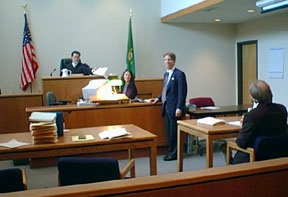
- Complete the Camera in the Courtroom forms
- Present completed forms to the courtroom where the proceeding will be held. (See Department Assignments, click here.)
- Out-of-town media may scan and email the completed forms to the San Diego Superior Court Public Affairs Officer at emily.cox@sdcourt.ca.gov. Please call the Court’s Public Affairs Office first at (619) 844-2353.
- The judicial officer presiding over the case will make the decision about allowing cameras in the courtroom.
What is an arraignment? [BACK TO FAQs]
An arraignment is a hearing in court in which the defendant is formally charged with an offense, given a copy of the complaint,
and informed of his/her constitutional rights. The defendant enters a plea of guilty or not guilty at this hearing.
Future court dates are set. Sometimes there is a request to increase or reduce bail.
Can the public view court files? [BACK TO FAQs]
Yes, the public may view and obtain copies of the following case types:
- Criminal
- Civil
- Domestic (Divorce, Child Custody, Legal Separation, and Domestic Violence)
- Mental Health (Civil and Criminal)
- Minor Offense (Traffic and Infractions)
- Probate
- Small Claims
How can I obtain a copy of a court file? [BACK TO FAQs]
Once you have located the case number and court location, there are a number of ways to obtain a copy of a court record. Records
may be requested:
- In person at the courthouse or branch location where the record is located.
- By mailing a request for copies to the office where the record is located, along with appropriate fee.
Mission Statement and Values
Mission Statement:
- The Employees of the San Diego District Attorney, in partnership with the Community we serve, are dedicated to the pursuit of truth, justice and protection of the innocent, and the prevention of crime through the vigorous and professional prosecution of those who violate the law.
Values:

- Ethics – We hold ourselves to the highest standard of integrity and personal and professional conduct.
- Respect – We treat each other and all members of the public with dignity and respect.
- Accountability – We accept a shared responsibility for ensuring sound fiscal management, operational efficiency and continuous improvement.
- Support for Victims – We show compassion and understanding to the victims of crime and their families.
- Diversity – We are committed to diversity, and recognize the significant and valuable contributions to our Mission from our employees and the community we serve.
- Teamwork – We are committed to teamwork to achieve our mission, and acknowledge that, as employees of the District Attorney we are also members of the San Diego County Team, and we embrace its motto, “the noblest motive is the public good.”
- Community Partnership – We advocate and support building strong and viable partnerships with law enforcement, all members of the criminal justice systems and the community we serve to achieve the highest level of public safety for our citizens.
- Communication – We are open and forthright in our communications with each other and all those with whom we come in contact.
